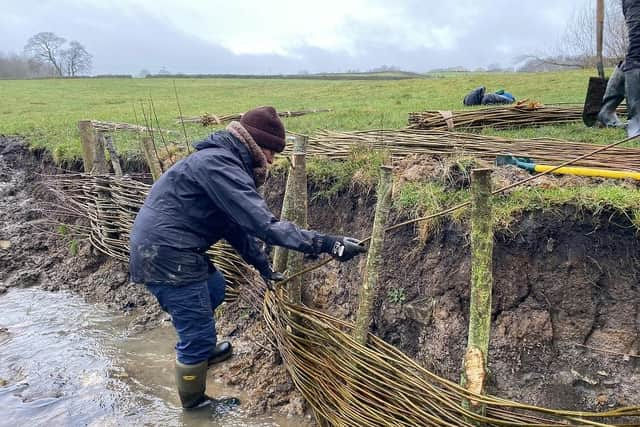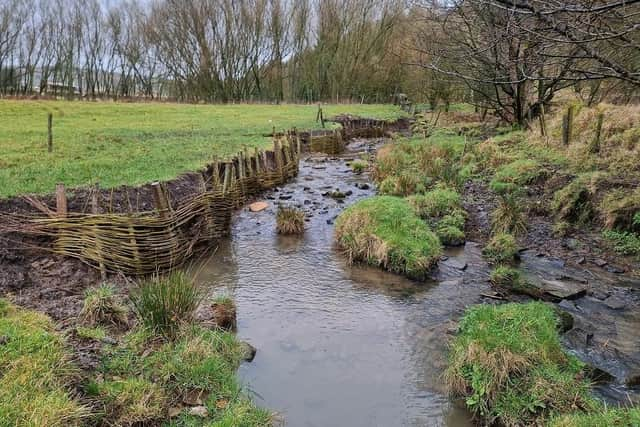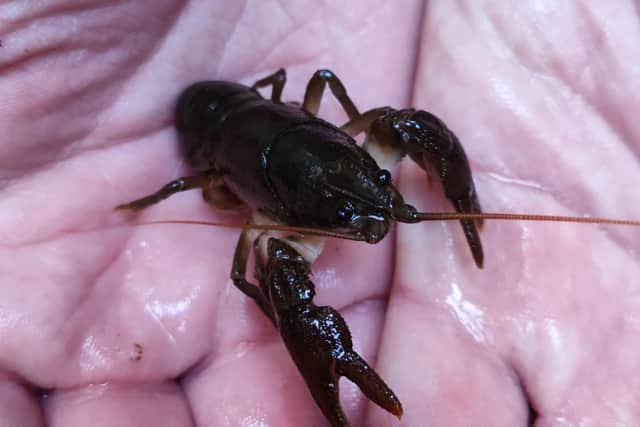Success of £50k project to revive Calderdale’s waterways
and live on Freeview channel 276
Yorkshire Wildlife’s Trust Reviving Calderdale’s Rivers programme has also seen invasive Himalayan Balsam removed and willow walls installed to prevent riverbank erosion.
The £50,000 scheme to improve habitat and water quality is jointly funded by the Environment Agency and Yorkshire Water.
Advertisement
Hide AdAdvertisement
Hide AdWith technical support from The Wild Trout Trust and Calder and Colne Rivers Trust, the project surveyed 42km of river to identify actions to improve water courses in the district.


Ineke Jackson, Project Manager for the Environment Agency, said: “The Reviving Calderdale’s Rivers project has been focused on improving the ecological health and water quality in Calderdale and we have seen great results.
“The expertise of everyone involved has led to really positive improvements for wildlife along the rivers by protecting riverbanks and reducing the impacts of invasive species.
“We’re looking forward to working with our partners on other exciting work this year. This will use the valuable information we’ve gained from the surveys to improve the ecological health of Calderdale’s rivers even further.”
Advertisement
Hide AdAdvertisement
Hide AdUnder the plans drawn up as a result, work done so far includes:


*2.7km of river being enhanced by using willow spiling at key areas along the river bank to reduce erosion. Living willow walls, which help protect the river bank from erosion and provides vital habitat, have been installed along two farmers’ fields at Strines Beck, Bradshaw, Halifax. This prevents large amounts of sediment from the land washing into the river during rain, protecting water quality and species living in the river.
*3.9 hectares of the invasive non-native species, Himalayan Balsam, which chokes river banks has been removed from the River Ryburn at Ripponden. Himalayan Balsam outcompetes native plant species, reducing habitat, and erodes riverbanks which releases soil into the water, reducing water quality.
*With the help of FORUS Tree community group, Yorkshire Wildlife Trust removed several tons of rubbish from Hebble Brook at Halifax, including traffic cones, shopping trollies and a sofa during a river clean up.
Advertisement
Hide AdAdvertisement
Hide Ad*Fences were put up to protect riverbanks and allow vegetation to regenerate. The area where native crayfish were found was fenced to protect the crayfish from disturbance and disease.


*42km of river was surveyed by the partnership, with additional input from Calderdale Council and FORUS Tree, to identify what further actions are needed to improve the river. These surveys also resulted in the native White Clawed Crayfish being rediscovered in Luddenden Brook last year
As the project with Yorkshire Wildlife Trust concludes, the next step for Calderdale’s rivers, which face pressures from agricultural practices and rural land management, is to use the results from the surveys to carry out more improvements through further projects starting this year.
This will bring a boost to the catchment and tackle some of the issues affecting water quality and habitats.
The completion followed a national invasive non-native species (INNS) week, run by the GB non-native species secretariat in May.
It called on people to play their part to stop the spread of invasive animals and plants, such as Himalayan Balsam, which are one of the top drivers of biodiversity loss.
Advertisement
Hide AdAdvertisement
Hide AdElliot Baxendale, Project Officer from Yorkshire Wildlife Trust, added: “We’re absolutely delighted with how successful the work carried out as part of the project has been.
“The restoration interventions are a great example of the importance of working with local farmers and landowners to make improvements for all. They will reduce riverbank erosion, increase water quality and provide habitat for river-dwelling species.”
